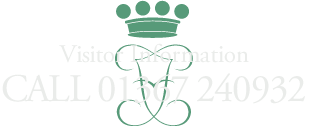Our History
Buscot Park was built by Edward Loveden Loveden between 1779 and 1783. The house is a dignified example of the late eighteenth-century taste for Italianate country houses, inspired by the architecture of the great Renaissance architect, Andrea Palladio. A subsequent owner, Robert Tertius Campbell, died bankrupt in 1887, having spent his large fortune on turning Buscot into a model agricultural estate.
Buscot was then sold to Alexander Henderson, later the 1st Lord Faringdon, a city financier of exceptional ability. With catholic tastes in art, he bought paintings by Rembrandt, Murillo, Reynolds and Burne-Jones, establishing a solid core to the Faringdon Collection.
Gavin Henderson, the 1st Lord Faringdon's grandson and heir, was also an enthusiastic collector of pictures, and he added the bulk of the pictures to be seen at Buscot today. He also remodelled the house by removing the heavy Victorian additions that had compromised the original design, as well as building the two balancing pavilions that stand to the east and west of the house.
In 1956 the Buscot Park estate was bequeathed to the National Trust, and the contents of the house were subsequently transferred to the Trustees of the Faringdon Collection. The present Lord Faringdon lives at Buscot Park, administering the house and grounds on behalf of the National Trust. He continues to acquire new works by contemporary artists to enhance the Faringdon Collection.
 = House & Grounds Open
= House & Grounds Open = Grounds Open Only
= Grounds Open Only = Closed
= Closed

 >
>